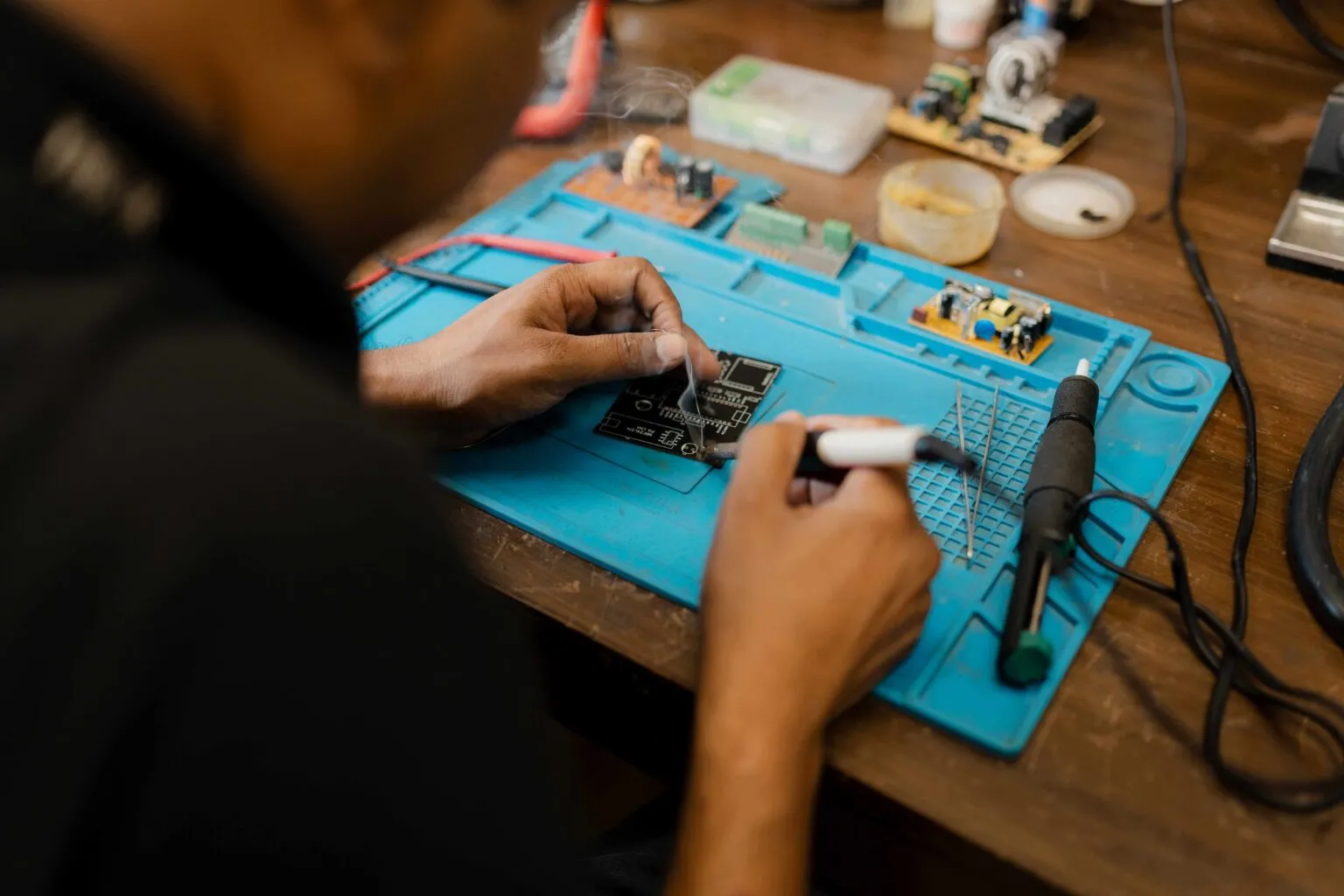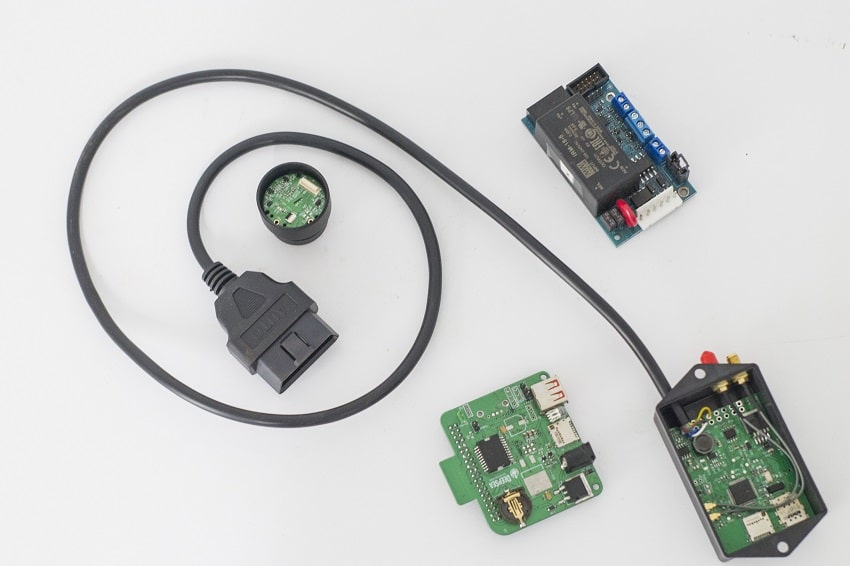Embedded systems are everywhere. They quietly support the advanced features of many consumer electronics. They also play a big part in fields like healthcare and manufacturing, particularly with plant automation systems. These special computer systems are usually hidden inside larger devices. They are designed to do specific tasks very well. As artificial intelligence grows and the Internet of Things gets bigger, embedded systems are becoming even more important in our tech world.

What Are Embedded Systems?
An embedded system is a special type of computer. It is made to do a certain job, unlike general computers like laptops or smartphones. This kind of system mixes computer hardware and software. It works with a larger system or device to do a task. Embedded systems are built for one purpose. For example, a digital watch has an embedded system for telling time. A washing machine uses one to control its wash cycles. The operating system in an embedded system, such as Microsoft Windows, is usually made just for its specific function. This helps it work better and use fewer resources.
How Embedded Systems Work?
At their core, embedded systems use microprocessors or microcontrollers. They follow instructions that are coded in their software, which requires little memory. These instructions tell the system how to work with its hardware and the outside world. Programming languages like C, C++, and Assembly help create the software that controls embedded systems.
The user interface can be simple, like buttons and lights, or more complex, like screens with graphics. This depends on what the system is for. For example, in a digital camera, the embedded system handles capturing, processing, and saving images. It also includes a graphical user interface for adjusting settings and viewing images. On the other hand, a traffic light’s embedded system only controls the light changes. It does not have a user interface like a camera. Mobile devices, such as smartphones, show how embedded systems can have detailed user interfaces that manage calls, videos, and different applications.
Types of Embedded Systems
Embedded systems can be sorted by how complex and functional they are. Standalone systems, like digital watches and microwave ovens, as well as video game consoles, work on their own and do not need to connect with other systems. In contrast, networked systems, such as home security systems and internet-connected appliances, rely on network connections to share information and data.
Real-time embedded systems are essential where precise timing and quick responses are needed to provide the required output. This includes devices like medical devices and industrial control systems. They must react to inputs quickly, which helps them work accurately and reliably. The complexity of an embedded system comes from several factors. These include the power of its integrated circuit, the number of peripheral devices it controls, and how complicated its software is.
5 Real-Life Examples of Embedded Systems
Embedded systems are everywhere in our daily lives. Let’s look at five embedded systems examples that show how they are changing different industries. These examples highlight how embedded systems can adapt and work in many areas. They are used in 3D bioprinters, systems for monitoring farms, technology for electric vehicles, and digital signs. These cases reveal the big changes embedded systems are making in various fields.

Example 1: Smart Home Security Systems
Smart home security systems are a great example of the Internet of Things trend. They use built-in systems to offer safety and automation. These systems include sensors, cameras, alarms, and communication tools, all managed by a central control unit. With special software, they allow for real-time monitoring, data collection, and remote control through easy-to-use mobile apps.
Motion detectors and door and window sensors keep collecting data. They alert homeowners if there might be a break-in. Automatic actions, like sounding alarms or sending alerts to emergency contacts, boost security and help people feel calm. Homeowners can also arm or disarm the system from afar, change settings, and watch live video feeds. This gives them full control and a good view of their home’s safety.
Example 2: Wearable Fitness Trackers
Fitness trackers have changed the way we keep track of our health. They use small systems to collect and analyze important information. This helps people live healthier lives. These small devices can be worn on the wrist or clipped onto clothing. They use sensors and smart programs to track different health measurements. Here are some key features of fitness trackers:
- Heart rate monitoring: Optical sensors check your heart rate throughout the day, giving you information about your heart health and how hard you are exercising.
- Activity tracking: Accelerometers and gyroscopes record your movements, letting you count steps, measure distance, estimate calories burned, and analyze sleep patterns.
- Data management: Special software processes and stores information. It can send this data wirelessly to smartphones or cloud services so you can easily access it and see your progress.
Example 3: Automotive Engine Control Systems
Modern vehicles depend a lot on embedded systems. These systems help with performance, fuel efficiency, and safety. The engine control unit (ECU) is key to this system. It is an advanced embedded system that controls important engine functions. The ECU keeps track of and adjusts things like fuel injection timing, air intake, and ignition timing. It uses data from different sensors in real time. This control helps the engine run better, cuts down on emissions, and improves fuel economy. Additionally, in electric vehicles, electric vehicle charging stations and embedded systems manage battery use, control power sent to the motor, and handle regenerative braking.
Example 4: Point of Sale (POS) Systems
Point of Sale (POS) systems are common uses of embedded systems, often seen in stores. These systems help handle transactions, keep track of inventory, and manage customer information using an integrated circuit. POS systems have functions made just for sales tasks and often operate on embedded operating systems. They also work with peripheral devices like barcode scanners and receipt printers. The user interface is easy to use, which improves the shopping experience. POS systems show how embedded systems make processes easier in retail, highlighting their importance in making operations smoother.
Example 5: Digital Signage and Information Displays
From captivating advertisements to informative public displays, digital signage has become an integral part of modern communication. Embedded systems play a crucial role in powering these dynamic displays, delivering visually engaging content and interactive experiences. High-definition screens, media players, and networking capabilities converge to present captivating visuals, videos, and interactive elements. Content can be updated remotely, allowing businesses to tailor messaging based on location, time of day, or target audience.
Feature | Benefits |
High-resolution displays | Deliver stunning visuals and vibrant colors. |
Network connectivity | Enables remote content updates and centralized management. |
Interactive capabilities | Engage viewers through touchscreens and motion sensors. |
Impact of Embedded Systems on Daily Life
The impact of embedded systems on our daily lives is huge, even if we don’t always notice them. From the time we wake up to when we sleep, these systems help us do tasks more easily, improve our experiences, and add to our comfort. For example, a smartphone makes it easy to talk to others. Household appliances, like a smart thermostat, help to keep our homes at a nice temperature. A GPS guides us on our trips. Embedded systems are now a part of our daily life, making everything work better and keeping us connected.
Enhancing User Experience
Embedded systems are great at automating tasks and making things easier for users in many areas, including industrial machines. For example, look at a microwave oven. Its embedded system controls heating cycles, power levels, and timing. This makes cooking easy for the user. Washing machines do the same by using embedded systems to manage wash cycles, water levels, and spin speeds. This means users do not have to adjust these settings themselves. Overall, embedded systems work quietly in the background, utilizing concepts like cooperative multitasking to handle complex or repetitive tasks, so users can focus on what they want to achieve instead of getting into the details of how things work.
Improving Safety and Efficiency
Embedded systems are essential software components. They make things safer and more efficient in important areas where people’s lives are involved. For example, advanced medical equipment depends a lot on embedded systems. They help with accurate monitoring, precise drug delivery, and complex imaging techniques. In cars, safety systems also use embedded systems. These include anti-lock brakes, airbag controls, and electronic stability control. They help cars respond quickly to dangerous situations. This reduces risks and helps prevent accidents. In industries, embedded systems manage machines, track processes, and follow safety rules. This way, they support smooth operations and protect workers’ health.
Conclusion
Embedded systems are very important in our daily lives. They help make things better and safer through automation. You can find them in many products like smart home security systems, wearable fitness trackers, car engine controls, payment systems, and digital displays, including various industry devices. These examples show how much embedded systems affect us. As technology moves forward, we can expect even more exciting changes in embedded systems. They will become more integrated into our lives. Stay curious and look into the many ways embedded systems can change how we connect with the world.
FAQ's
Can Embedded Systems Be Updated After Deployment?
Many embedded systems are made to allow updates after they are set up. This could mean updating the embedded system software to add new features or fix problems. The way this is done often depends on how the system is designed.
How Do Embedded Systems Connect to the Internet?
Embedded systems link to the internet through wired or wireless networks methods. This can be done using Ethernet, Wi-Fi, or Bluetooth. The choice of method depends on the embedded operating system and the device’s hardware abilities.
What Are the Future Trends in Embedded Technology?
Future trends show that we will see more use of artificial intelligence and machine learning. This will make devices work better and more independently. We will also see the Internet of Things grow. This means more devices and systems will connect to each other.